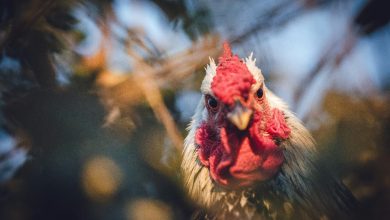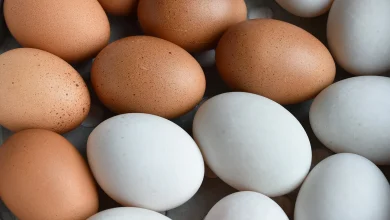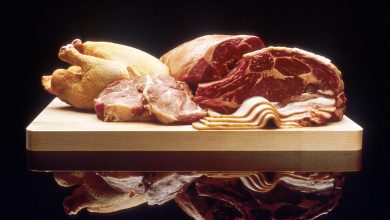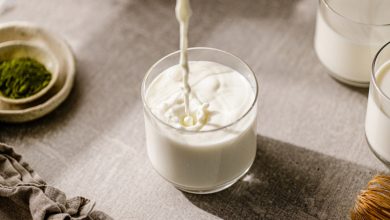Organic Poultry Production- potentials in North-East Hill Region
Mihir Sarma 1 and Pankaj Deka 2
1Junior Scientist, Livestock Research Station
Assam Agricultural University,Mondira.Kamrup.
2SMS ( Animal Science ) ,Krishi Vigyan Kendra, Jorhat ( Assam)
Organic farming can be defined as an approach to agriculture and allied sector where the aim is to create integrated, humane, environmentally and economically sustainable agricultural production systems producing acceptable levels of crops, livestock and human nutrition, protection from pests and diseases, and an appropriate return to the human and other resources employed. Maximum reliance is placed on locally or farm-derived, renewable resources and the management of self-regulating ecological and biological processes and interactions. Reliance on external inputs, whether chemical or organic, is reduced as far as possible. Organic product has been produced in a humane way and by sustainable management that does not damage the environment.
In order to achieve the animal welfare, environmental, resource-use sustainability and other objectives, certain key principles are adhered to organic poultry production:
♦ Organic poultry must have access to the outdoors, stock number are related to the carrying capacity of the land.
♦ Reliance on farm or locally derived renewable resources, such as biologically-fixed atmospheric nitrogen and home grown poultry feed.
♦ Reliance on feed resources produced organically, which are suited for poultry’s evolutionary adaptations and which minimize competition for food suitable for human consumptions.
♦ Use of housing systems which allow natural behaviour patterns to be followed and which give high priority to animal welfare considerations, with the emphasis on free-range systems for poultry.
♦ Use of breeds and rearing systems suited to the production systems employed, in terms of disease resistance, productivity, hardiness, and suitability for ranging.
Why organic poultry:
In the last few decades poultry industry has transformed from mere backyard poultry to commercial farm, but the issues of food safety and quality remain unaddressed. Today, consumers are increasingly concerned about the quality, source and conditions under which their food is grown. Hence, organic poultry farming has become as an approach to address these issues. Organic products can help the consumers to limit exposure to pesticides and chemical based fertilizers. Organic chicken farming is cleaner and may be more environmentally friendly. In organic poultry production, the chicken is treated in a most humane manner during their life. Consumers may also prefer the flavour of organic chicken.
Characteristics of organic poultry:
Organic poultry may not be grown starting from conventional day old chicks, parent stock need not be organically produced, and conventional hatcheries may be utilized. All organic systems are free range, never kept in cages and range should be well covered with suitable and properly managed vegetation. It must include shelter and other features that encourage ranging. Flock size is much smaller than on conventional and most free range farms. Ideally they should be housed in small mobile units that can be moved around farm. In organic poultry system, every effort should be made to keep the stress on the birds to a minimum, both in terms of the physiological demands placed on them by the production system and the environment in which they are kept. Positive welfare (animal’s needs and avoidance of cruelty) is the name of the production system. Slower growing and traditional breeds that are better suited to free range systems are best, and if faster growing variety/strains are used, they must be slaughtered after a recommended conversion period. Mutilations such as beak trimming are banned. Birds should have the freedom to express normal behavior and have sufficient space, proper facilities and the company to other birds to do so. In terms of disease management, prevention is always better than cure, and bio security is the watchword. Feeding and water should be better to prevent the spread of diseases. Antibiotics are used to treat a specific problem, but cannot be used routinely. Vaccination against prevalent diseases may be allowed.
Main Issues to be considered for Organic Poultry Farming:
To establish an organic poultry enterprise, there are many issues to think about. Some of the most important issues are-
- Soil type: The soil needs to be relatively free draining. Heavy, wet land not only makes access difficult, but also creates more challenges for the birds.
- Shelter: Poultry need a sheltered environment. If possible, exposed locations should be avoided.
- Feed: Emphasis should be given to get 100% organic ration. It is important to maintain organic principles on home grown feed. Increasing feed prices and the emphasis organic principles place on home grown feed mean that feed is a major consideration for setting up an organic poultry production unit.
- Labour Cost: As compared to conventional system of rearing, organic poultry production is more labour intensive. The birds are housed in smaller groups, often in mobile housing.
- Infrastructure requirement: Water should be available in the house and preferably also on the free range area. Organic feed ingredients should be available round the year. If there are no existing slaughter facilities available, a processing unit should be set up on the farm.
- Capital investment: To establish a successful and efficient organic poultry production unit, a considerable amount of capital investment is required.
Advantages of Organic poultry farming:
- Products are safe and of good quality for human consumption.
- It ensures to keep poultry in comfortable housing and environment and provides better welfare measures so that productive performance is better.
- The production system is sustainable and scientific.
- It generally avoids the use of antibiotics/drugs etc. for the treatment of sick animals, so that there are less chances of residual effect of drugs on animal products.
Disadvantages of Organic poultry farming:
- It is generally difficult to spare more housing space as per standard.
- The conversion period is very long.
- Prolonged withdrawal period is required after any treatment with antibiotic or other drugs.
- Cost of organic feed is very high.
- Due to strict adherent of various rules and regulations for organic poultry farming the products become costlier.
Favourable features in North East Hill region for organic farming:
The north-east hill states in India, is characterized predominantly by rural and agriculture based economics. Most of the agriculture and livestock rearing in this region of India may be safely classified or could be easily converted to organic poultry farming. Farm products in these areas should be given priority to certify as organic products after following certain formalities of organic farming standards as per National Standards for Organic Production (NSOP). The backyard poultry farming system of this region, may be termed as “intermediate”, could easily be converted into organic following NSOP guideline and scientific health care management practices. The fertilizer and pesticide based technology associated with green revolution in agriculture has not penetrated the NEH region of India to the extent it did in other regions. Considering the hill ecology, the possible adverse effects of most modern methods in industry and agriculture on the plains, its abundance of difficult yet fertile tracts of land, its tribal customs of land tenure, its economic strength in terms of livestock ownership and limitations of irrigation, organic farming seems to be a promising avenue for development. Some of the favourable features for organic farming in NEH region are:
- Crop-livestock integrated/mixed farming: Animal husbandry is an integral part of Agriculture in NEH region, as this region is dominated by mono cropping and crop failure often pushes the farmer’s economy to the verge of collapse. Majority of farmers in these regions follow mixed crop-livestock farming systems wherein livestock rearing is integrated with food crop production. Livestock and poultry of this region depend on crops and crop by products for their feed and fodder requirements and return nutrients to the crop via manure for the sustainability of the system. Further non-vegetarian food habit of indigenous population is the strength of livestock and poultry sector to develop. For sustainable income and nutritional security almost each and every household possess a small piggery and/or poultry unit besides the agriculture /horticulture and fisheries. Hence, proper and effective integration of these resources would be the first step towards organic farming.
- Large native population and preference for products derived for local breeds of livestock and poultry: The major proportion of livestock and poultry of this region are of nondescript/local type, which is considered to be sturdy, can grow under harsh environmental conditions, disease resistant and require low input in terms of nutrition. These characteristics are important for selection for organic production. Further, the demand and preference of meat/egg obtained from local/desi birds, by the consumers of this region is an added advantage towards promoting native population in organic farming system.
- Low input livestock/poultry rearing system (traditional): The livestock/poultry rearing system of this region is unique and different from other parts of the country. The farmers aim at getting medium output from nearly zero input and mostly based on locally available resources.
- Indigenous technical knowledge in animal husbandry practices: The region is storehouse of indigenous technical knowledge (ITK) in agriculture and allied sector. Still, several plants are being used in the treatment of animal for infectious and non-infectious diseases. Use of turmeric in food and milk in drinking water for coccidiosis, use of arsenicum album in drinking water for Infectious Bursal Disease, vinegar for water sanitization, garlic for chronic respiratory disease, red chilly for duck plague etc. are the example of such practices in traditional way of poultry farming. Scientific validation of these resources may lead to identification of several beneficial therapies for organic farming system.
Though organic livestock production has not yet been properly started in this region, but NEH region can be explored as a destination for organic livestock and poultry production if proper attention is given in terms of development and dissemination of organic farming technology to nature loving rural peoples of the area.
References:
Bhattacharyya,P. and Chakraborty, G. (2005). Current status of organic farming in India and other countries. Indian J. Fertilisers. 1(9): p111-123.
Biradar, C.S., Dodamani, M. S. . Inamadar, B. K and Murasalogi. A. J. (2011) Organic Poultry Farming in India- issues and approaches, Vet. World, 4(6): p273-277.
Cooper, O.(2009) Free-range birds benefit from under floor heating. Poultry World, March 2009: p24.
Gogoi, A.K. (2011) Organic livestock farming. Recent advances in livestock production and management, p30-38.
Rai, B., Singh, M.K. and Sharma, M.C. (2009) Sustainable organic livestock farming under integrated management system. Compendium, ISAPM National Symposium, 26-28 February, 2009: p15-20.
Russel,S.M. and Lyon,S.P.(2006) Designer bedding for poultry. Poultry International. August 2006, p42.
Dr. Mihir Sarma
Junior Scientist,
Livestock Research Station
Assam Agricultur University, Mondira Kamrup.
E.mail- mihirsarma21@gmail.com




